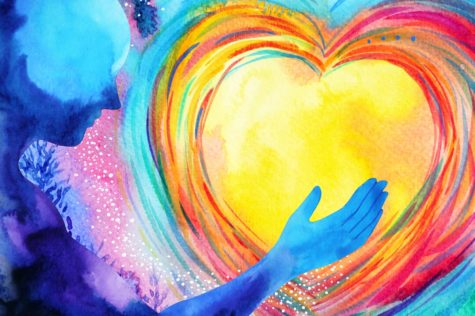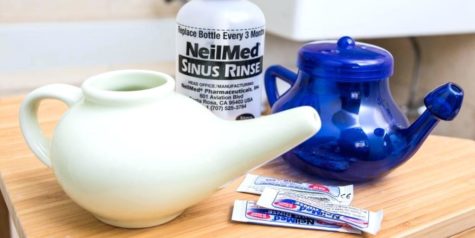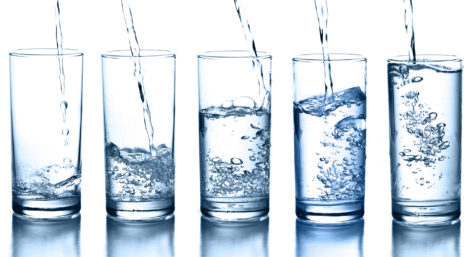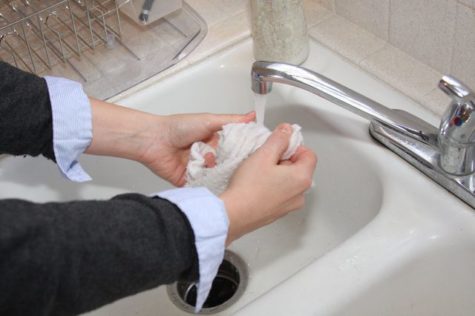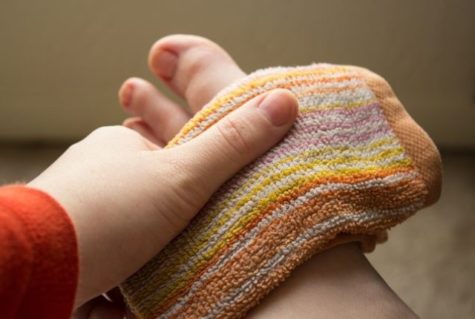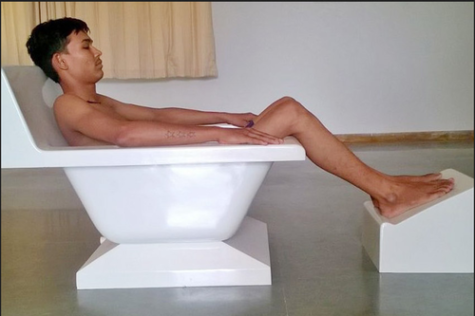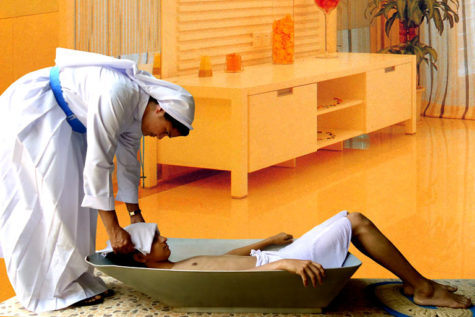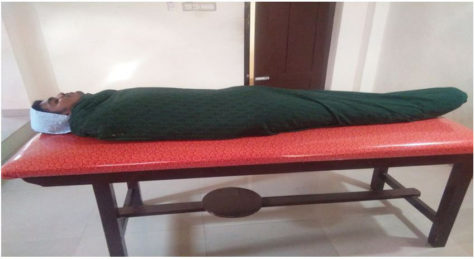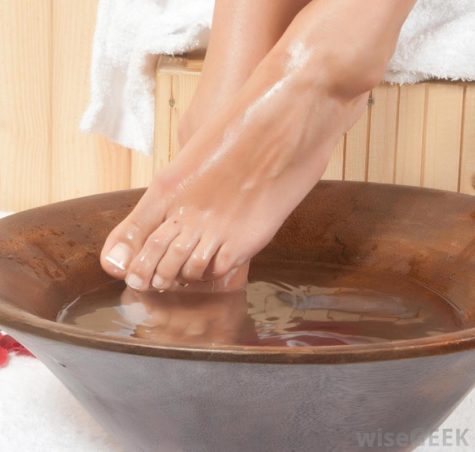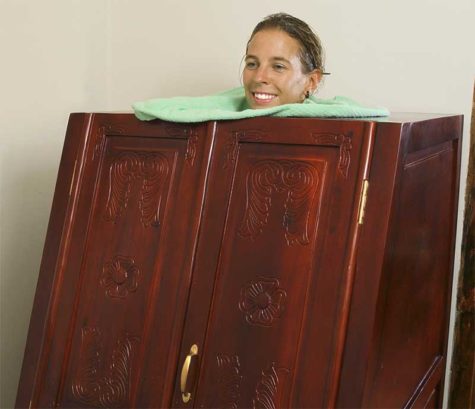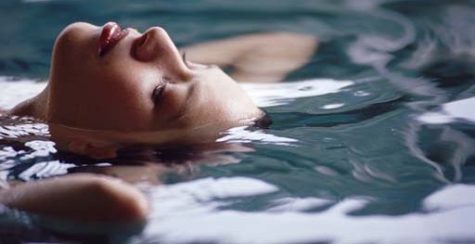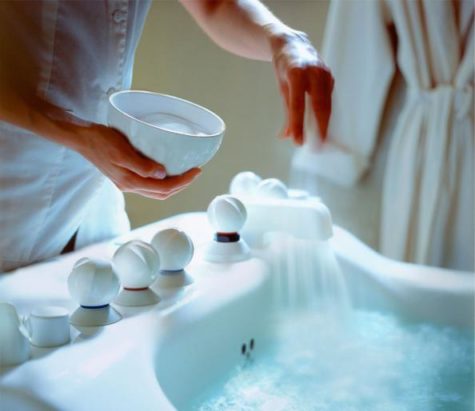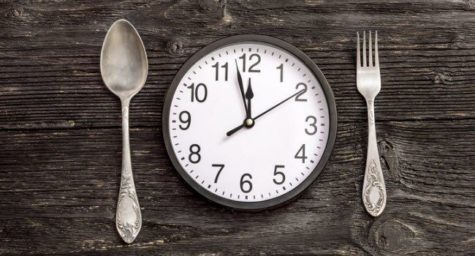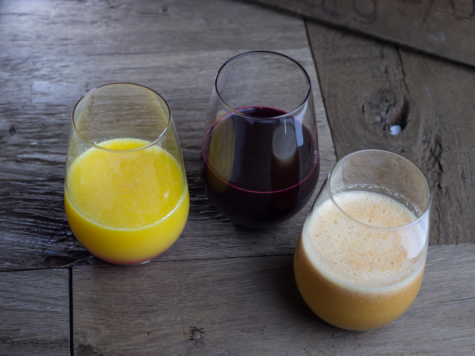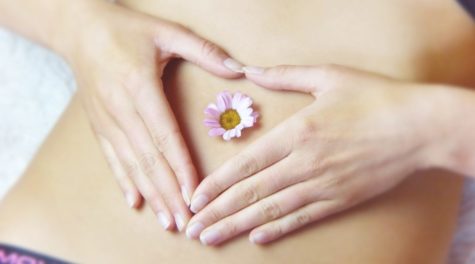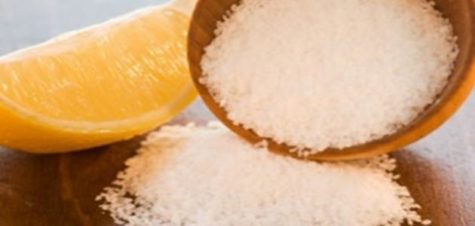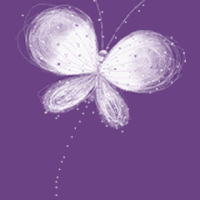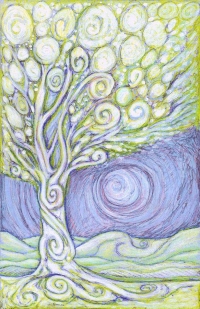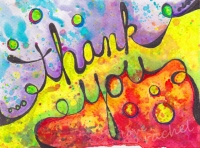Clearing and Cleansing
Blanket Forgiveness
Blanket forgiveness is an awesome instant healing technique that uses both touch and words. It is awesome because it works so quickly and it is awesome because you don’t even have to know whom you are forgiving for it to work.
It is based on an assumption that any physical condition involving swelling or infection also contains an emotional component of repressed anger or guilt. Notice that I didn’t say it was caused by emotions, just that it can be useful to assume that emotions are involved in causing at least some of the stress that is maintaining or aggravating the condition. If you can relieve the emotional tension, it will help the body heal more quickly.
The actual technique is very simple:
With your hand or fingers, you lightly touch the area that needs healing while at the same time you repeat the words, “whatever this is related to, I forgive it completely,” for as long as you can or until you get some relief. It’s likely that you’ll feel various physical sensations as you do this, such as tingling or movement or relaxation, and maybe even pain relief.
The more that anger or guilt is connected with the condition, the more quickly and dramatically you will experience healing effects. Even if angry emotions are only a small part of the malady, there will be some degree of benefit.
As I said, you don’t have to know consciously who or what the emotions are directed at. Just holding the idea of forgiveness while touching the infected or swollen area is enough to cause subconscious changes that will ease a lot of stress. The touch itself provides a certain amount of energy as well as helping to keep your mind focused on forgiving.
Note: It’s also very helpful to not just say the words but to experience them as well. What does forgiveness feel like? How does it sound? Is there a flavor? A color? A scent?
Of course, if you do know who or what you are resenting or feeling guilty about, that’s even better. Especially if you can make a breakthrough and are able to totally forgive and release it.
From: Instant Healing by Serge Kahili King
Try This Hawaiian Healing Technique
“Two years ago, I heard about a therapist in Hawaii who cured a complete ward of criminally insane patients–without ever seeing any of them.
The psychologist would study an inmate’s chart and then look within himself to see how he created that person’s illness. As he improved himself, the patient improved.
“When I first heard this story, I thought it was an urban legend. How could anyone heal anyone else by healing himself? How could even the best self-improvement master cure the criminally insane? It didn’t make any sense. It wasn’t logical, so I dismissed the story.
“However, I heard it again a year later. I heard that the therapist had used a Hawaiian healing process called ho ‘oponopono. I had never heard of it, yet I couldn’t let it leave my mind. If the story was at all true, I had to know more.
I had always understood “total responsibility” to mean that I am responsible for what I think and do. Beyond that, it’s out of my hands. I think that most people think of total responsibility that way. We’re responsible for what we do, not what anyone else does–but that’s wrong.
“The Hawaiian therapist who healed those mentally ill people would teach me an advanced new perspective about total responsibility. His name is Dr. Ihaleakala Hew Len. We probably spent an hour talking on our first phone call. I asked him to tell me the complete story of his work as a therapist.
He explained that he worked at Hawaii State Hospital for four years. That ward where they kept the criminally insane was dangerous. Psychologists quit on a monthly basis. The staff called in sick a lot or simply quit. People would walk through that ward with their backs against the wall, afraid of being attacked by patients. It was not a pleasant place to live, work, or visit.
“Dr. Len told me that he never saw patients. He agreed to have an office and to review their files. While he looked at those files, he would work on himself. As he worked on himself, patients began to heal.
“‘After a few months, patients that had to be shackled were being allowed to walk freely,’ he told me. ‘Others who had to be heavily medicated were getting off their medications. And those who had no chance of ever being released were being freed.’ I was in awe.
‘Not only that,’ he went on, ‘but the staff began to enjoy coming to work. Absenteeism and turnover disappeared. We ended up with more staff than we needed because patients were being released, and all the staff was showing up to work. Today, that ward is closed.’
“This is where I had to ask the million dollar question: ‘What were you doing within yourself that caused those people to change?’
“‘I was simply healing the part of me that created them,’ he said. I didn’t understand. Dr. Len explained that total responsibility for your life means that everything in your life- simply because it is in your life–is your responsibility. In a literal sense the entire world is your creation.
“Whew. This is tough to swallow. Being responsible for what I say or do is one thing. Being responsible for what everyone in my life says or does is quite another. Yet, the truth is this: if you take complete responsibility for your life, then everything you see, hear, taste, touch, or in any way experience is your responsibility because it is in your life.
“This means that terrorist activity, the president, the economy or anything you experience and don’t like–is up for you to heal. They don’t exist, in a manner of speaking, except as projections from inside you. The problem isn’t with them, it’s with you, and to change them, you have to change you.
“I know this is tough to grasp, let alone accept or actually live. Blame is far easier than total responsibility, but as I spoke with Dr. Len, I began to realize that healing for him and in ho ‘oponopono means loving yourself.
“If you want to improve your life, you have to heal your life. If you want to cure anyone, even a mentally ill criminal you do it by healing you.
I asked Dr. Len how he went about healing himself. What was he doing, exactly, when he looked at those patients’ files?
“‘I just kept saying, ‘I’m sorry’ and ‘I love you’ over and over again,’ he explained.
“That’s it?”
“That’s it.”
“Turns out that loving yourself is the greatest way to improve yourself, and as you improve yourself, you improve your world.
“Let me give you a quick example of how this works: one day, someone sent me an email that upset me. In the past I would have handled it by working on my emotional hot buttons or by trying to reason with the person who sent the nasty message.
“This time, I decided to try Dr. Len’s method. I kept silently saying, I’m sorry’ and ‘I love you,’ I didn’t say it to anyone in particular. I was simply evoking the spirit of love to heal within me what was creating the outer circumstance.
“Within an hour I got an e-mail from the same person. He apologized for his previous message. Keep in mind that I didn’t take any outward action to get that apology. I didn’t even write him back. Yet, by saying ‘I love you,’ I somehow healed within me what was creating him.
“I later attended a ho ‘oponopono workshop run by Dr. Len. He’s now 70 years old, considered a grandfatherly shaman, and is somewhat reclusive. He praised my book, The Attractor Factor. He told me that as I improve myself, my book’s vibration will raise, and everyone will feel it when they read it. In short, as I improve, my readers will improve.
“‘What about the books that are already sold and out there?’ I asked.
“‘They aren’t out there,’ he explained, once again blowing my mind with his mystic wisdom. ‘They are still in you.’ In short, there is no out there. It would take a whole book to explain this advanced technique with the depth it deserves.
“Suffice It to say that whenever you want to improve anything in your life, there’s only one place to look: inside you. When you look, do it with love.”
It’s the attraction factor – like attracts like – his God-self was so strong that it attracted the God-self in others.”
Article by: Joe Vitale
Yogic Kriyas
Certain yogic kriyas which have specific therapeutic values and are highly beneficial in the maintenance of health and the healing of diseases.
There are six specific cleansing techniques, known as Shat Kriyas, which eliminate impurities and help cure many ailments. Of these, the following four can be practiced safely:
Jalaneti
Most diseases of the nose and throat are caused by the accumulation of impurities in the nasal passage. Jalaneti is a process of cleansing the air passage of the nostrils and the throat by washing them with tepid saline water. Take a clean jalaneti pot.
Put half a teaspoonful of salt in the pot and fill it with lukewarm drinking water. Stand up and tilt your head slightly to the right. Insert the nozzle of the pot in the left nostril and let the water flow into it. Inhale and exhale through the mouth, allowing the water to flow out through the right nostril. Reverse this process by tilting your head to the left and letting the water flow from the right to the left nostril.
Jalaneti should be practiced only in the morning. It will relieve sore throat, cold, cough, sinusitis, migraine, headache and cases of inflammation of the nasal membranes. It keeps the head cool and improves vision.
Vamana Dhouti or Kunjal
This is a process of cleansing the interior of the stomach. Drink four to six glasses of tepid water, with a little salt added to it, early in the morning on an empty stomach.
Then stand up, bend forward, insert the middle and index fingers of the right hand into the mouth until they touch the uvulva. Tickle it until you feel a vomiting sensation.
The saline water thus ejected will bring up bile and other toxic matter with it. Repeat the process till all the water is vomited out. This should be done once a week or as and when necessary. It is beneficial for cleansing the stomach in cases of excessive bile, constipation, and gastric troubles.
Persons suffering from hyperacidity should perform kunjal with unsalted water. It gives relief from headaches, nervous weakness, chronic cold, cough and asthma. It should not be practiced by those suffering from high blood pressure, ulcers and heart trouble.
Kapalbhati
Kapala means ‘skull’ and bhati means ‘shine’. This is a respiratory exercise for the abdomen and diaphragm. The channels inside the nose and other parts of the respiratory system are purified by this exercise. In the process, the brain is also cleared.
Sit in a comfortable position, preferably in padmasana. Exercise the diaphragm by exhaling suddenly and quickly through both nostrils, producing a hissing sound. Inhaling will be automotive and passive. The air should be exhaled from the lungs with a sudden, vigorous inward stroke of the front abdominal muscles. The abdominal stroke should be complete and the breath should be expelled fully. While inhaling, no willful expansion is necessary and the abdominal muscles should be relaxed.
This exercise should be done in three phases, each consisting of 20 to 30 strokes a minute. A little rest can be taken in between. Throughout, the thoracic muscles should be kept contracted. Kapalbhati enables the inhalation of a good amount of oxygen which purifies the blood and strengthens the nerve and brain centers. This kriya provides relief in many lung, throat and chest diseases like chronic bronchitis, asthma, pleurisy and tuberculosis.
Trataka
In yoga, four exercises have been prescribed for strengthening weak eye muscles, relieving eye strain and curing of eye disease. They are known as ‘ Trataka ‘ ,which in sanskrit means ‘ Winkles gaze at a particular point.” or looking at an object with awareness.
The four tratakas are:
- Dakshinay jatru trataka in which, with face forwards, the eyes are fixed on the tip of the right shoulder
- Vamajatru trataka, in which the eyes are fixed on the tip of the left shoulder
- Namikagra trataka, in which the eyes are focused on the tip of the nose
- Bhrumadhya trataka, in which the eyes are focused on the space between the eyebrows.
These exercises should be practiced from a meditative position like padmasana or vajrasana. The gaze should be maintained for as long as you are comfortable, gradually increasing the period from 10 to 20 and then to 30 seconds. The eyes should be closed and rested after each exercise. Persons with acute myopia should perform the tratakas with their eyes closed.
About Therapeutic Baths
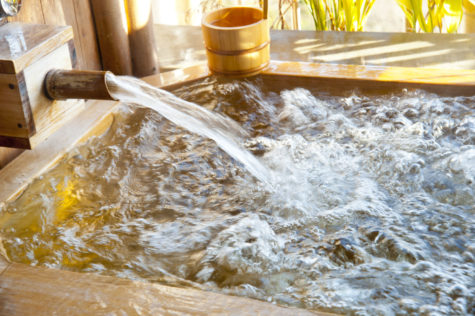
Water has been used as a valuable therapeutic agent since time immemorial. In all major ancient civilizations, bathing was considered an important measure for the maintenance of health and prevention of disease. It was also valued for its remedial properties. The ancient Vedic literature in India contains numerous references to the efficacy of water in the treatment of disease.
In modern times, the therapeutic value of water was popularized by Vincent Priessnitz, Father Sebastian Kneipp, Louis Kuhne and other European water-cure pioneers. They raised water cure to an institutional level and employed it successfully for the treatment of almost every known disease. There are numerous spas and “Bads” in most European countries where therapeutic baths are used as a major healing agent.
Water exerts beneficial effects on the human system. It equalizes circulation, boosts muscular tone and aids digestion and nutrition. It also tones up the activity of perspiratory gland and in the process eliminates the damaged cells and toxic matter from the system.
The common water temperature chart is : cold 100C to 180C, neutral 320C to 360C and hot 400C to 450C. Above 450C, water loses its therapeutic value and is destructive.
The main methods of water treatment which can be employed in the healing of various diseases in a do-it-yourself manner are described below.
Cold Compress
This is a local application using a cloth which has been wrung out in cold water. The cloth should be folded into a broad strip and dipped in cold water or ice water. The compress is generally applied to the head ,neck, chest, abdomen and back.
The cold compress is an effective means of controlling inflammatory conditions of the liver, spleen, stomach, kidneys, intestines, lungs, brain, pelvic organs and so on. It is also advantageous in cases of fever and heart disease. The cold compress soothes dermities and inflammations of external portions of the eye. When the eyeball is affected, the cold compress should follow a short fomentation.
Hot Compress
This is a cold compress covered in such a manner as to bring warmth. A heating compress consists of three or four folds of linen cloth wrung out in cold water which is then covered completely with dry flannel or blanket to prevent the circulation of air and help accumulation of body heat. It is sometimes applied for several hours. The duration of the application is determined by the extent and location of the surface involved, the nature and thickness of the coverings and the water temperature.
After removing the compress, the area should be rubbed with a wet cloth and then dried with a towel. A heating compress can be applied to the throat, chest, abdomen, and joints. A throat compress relieves sore throat, hoarseness, tonsillitis, pharyngitis and laryngitis.
An abdominal compress helps those suffering from gastritis, hyperacidity, indigestion, jaundice, constipation, diarrhea, dysentery and other ailments relating to the abdominal organs. The chest compress also known as chest pack, relieves cold, bronchitis, pleurisy, pneumonia, fever, cough and so on, while the joints compress is helpful for inflamed joints, rheumatism, rheumatic fever and sprains.
Enema
Also known as rectal irrigation, an enema involves the injection of fluid into the rectum. In nature cure treatment, only lukewarm water is used for cleaning the bowels. The patient is made to lie on his left side extending his left leg and bending the right leg slightly. The enema nozzle, lubricated with oil or Vaseline, is inserted in the rectum. The enema can containing the lukewarm water is then slowly raised and water is allowed to enter into the rectum. Generally, one to two liters of water is injected. The patient may either lie down on his back or walk a little while retaining the water. After five to 10 minutes, the water can be ejected along with the accumulated morbid matter.
A warm water enema helps to clean the rectum of accumulated fecal matter. This is not only the safest system for cleaning the bowels, but also improves the peristaltic movement of the bowels and thereby relieves constipation. A cold water enema is helpful in inflammatory conditions of the colon, especially in cases of dysentery, diarrhea, ulcerative colitis, hemorrhoids and fever. A hot water enema is beneficial in relieving irritation due to inflammation of the rectum and painful hemorrhoids. It also benefits women in leucorrhoea.
Hip Baths
The hip bath is one of the most useful forms of hydrotherapy. As the name suggests, this mode of treatment involves only the hips and the abdominal region below the navel. A special type of tub is used for the purpose. The tub is filled with water in such a way that it covers the hips and reaches up to the navel when the patient sits in it. Generally, four to six gallons of water are required. If the special tub is not available, a common tub may be used. A support may be placed under one edge to elevate it by two or three inches. Hip bath is given in cold, hot, neutral or alternate temperatures.
- Cold Hip Bath
The water temperature should be 100C to 180C. The duration of the bath is usually 10 minutes, but in specific conditions it may vary from one minute to 30 minutes. If the patient feels cold or is very weak, a hot foot immersion should be given with the cold hip bath.
The patient should rub the abdomen briskly from the navel downwards and across the body with a moderately coarse wet cloth. The legs, feet and upper part of the body should remain completely dry during and after the bath. The patient should undertake moderate exercise like yoga asanas, after the cold hip bath, to warm the body.
A cold hip bath is a routine treatment in most diseases. It relieves constipation, indigestion, obesity and helps the eliminative organs to function properly. It is also helpful in uterine problems like irregular menstruation, chronic uterine infections, pelvic inflammation, piles, hepatic congestion, chronic congestion of the prostate gland, seminal weakness, impotency, sterility, uterine and ovarian displacements, dilation of the stomach and colon, diarrhea, dysentery, hemorrhage of the bladder and so on. The cold hip bath should not be employed in acute inflammations of the pelvic and abdominal organs, ovaries and in painful contractions of the bladder, rectum or vagina.
- Hot Hip Bath
This bath is generally taken for eight to 10 minutes at a water temperature of 400C to 450C. The bath should start at 400C. The temperature should be gradually increased to 450C. NO friction should be applied to the abdomen. Before entering the tub,the patient should drink one glass of cold water. A cold compress should be placed on the head.
A hot hip bath helps to relieve painful menstruation, pain in the pelvic organs, painful urination, inflamed rectum or bladder and painful piles. It also benefits enlarged prostatic gland, painful contractions or spasm of the bladder, sciatica, neuralgia of the ovaries and bladder. A cold shower bath should be taken immediately after the hot hip bath.
Care should be taken to prevent the patient from catching a chill after the bath. The bath should be terminated if the patient feels giddy or complains of excessive pain.
- Neutral Hip Bath
The temperature of the water should be 320C to 360C. Here too, friction to the abdomen should be avoided. This bath is generally taken for 20 minutes to an hour. The neutral hip bath helps to relieve all acute and sub-acute inflammatory conditions such as acute catarrh of the bladder and urethra and subacute inflammations in the uterus, ovaries and tubes. It also relieves neuralgia of the Fallopian tubes or testicles, painful spasms of the vagina and prorates of the anus and vulva. Besides, it is a sedative treatment for erotomanis in both sexes.
- Alternate Hip Bath
This is also known as revulsive hip bath. The temperature in the hot tub should be 400C to 450C and in the cold tub 100C to 180C. The patient should alternately sit in the hot tub for five minutes and then in the cold tub for three minutes. The duration of the bath is generally 10 to 20 minutes. The head and neck should be kept cold with a cold compress. The treatment should end with a dash of cold water to the hips.
This bath relieves chronic inflammatory conditions of the pelvic viscera such as salpingitis, ovaritis, cellulitis and various neuralgias of the genito-urinary organs, sciatica and lumbago.
Spinal Bath
The spinal bath is another important form of hydrotherapic treatment. This bath provides a soothing effect to the spinal column and thereby influences the central nervous system. It is given in a specially designed tub with its back raised so as to provide proper support to the head. The bath can be administered at cold, neutral and hot temperatures. The water level in the tub should be an inch and a half to two inches and the patient should lie in it for three to 10 minutes.
The cold spinal bath relieves irritation, fatigue, hypertension and excitement. It is beneficial in almost all nervous disorders such as hysteria, fits, mental disorders, loss of memory and tension. The neutral spinal bath is a soothing and sedative treatment, especially for the highly strung and irritable patient. It is the ideal treatment for insomnia and also relieves tension of the vertebral column. The duration of this bath is 20 to 30 minutes.
The hot spinal bath, on the other hand, helps to stimulate the nervous, especially when they are in a depressed state. It also relieves vertebral pain in spondylitis and muscular backache. It relieves sciatic pain and gastrointestinal disturbances of gastric origin.
Full Wet Sheet Pack
This is a procedure in which the whole body is wrapped in a wet sheet, which in turn is wrapped in a dry blanket for regulating evaporation. The blanket should be spread on the bed with its edges hanging over the edge of the bed. The upper end should be about eight inches from the head of the bed. Then spread a linen sheet wrung out in cold water over the blanket so that its end is slightly below the upper end of the blanket.
The patient should lie on the bed sheet with his shoulders about three inches below the upper age. The wet sheet should be weekly wrapped round the body of the patient, drawn in, tightly tucked between the legs and also between the body and the arms. The sheet should be folded over the shoulders and across the neck. Now the blanket should be drawn tightly around the body and tucked in along the side in a similar manner, pulling it tightly. The ends should be doubled up at the feet.
A turkish towel should be placed below the chin to protect the face and neck from coming into contact with the blanket and to exclude outside air more effectively. The head should be covered with a wet cloth so that the scalp remains cold. The feet should be kept warm during the entire treatment. If the patient’s feet are cold, place hot water bottles near them to hasten reaction. The pack is administered for half an hour to one hour till the patient begins to perspire profusely. He may be given cold or hot water to drink.
This pack is useful in cases of fever especially in typhoid and continued fevers, and benefits those suffering from insomnia, epilepsy and infantile convulsions. It is useful in relieving chronic cold and bronchitis and helps in the treatment of rheumatism and obesity.
Foot Baths
- Hot Foot Bath
In this method, the patient should keep his or her legs in a tub or bucket filled with hot water at a temperature of 400C to 450C. Before taking this bath, a glass of water should be taken and the body should be covered with a blanket so that no heat or vapour escapes from the foot bath. The head should be protected with a cold compress. The duration of the bath is generally from 5 to 20 minutes. The patient should take a cold shower immediately after the bath.
The hot foot bath stimulates the involuntary muscles of the uterus, intestines, bladder and other pelvic and abdominal organs. It also relieves sprains and ankle joint pains, headaches caused by cerebral congestion and colds. In women, it helps restore menstruation , if suspended, by increasing supply of blood especially to the uterus and ovaries.
- Cold Foot Bath
Three to four inches of cold water at a temperature of 7.20C to 12.70C should be placed in a small tub or bucket. The feet should be completely immersed in the water for one to five minutes. Friction should be continuously applied to the feet during the bath, either by an attendant or by the patient by rubbing one foot against the other.
A cold foot bath, taken for one or two minutes,relieves cerebral congestion and uterine hemorrhage. It also helps in the treatment of sprains, strains and inflamed bunions when taken for longer periods. It should not be taken in cases of inflammatory conditions of the genito-urinary organs, liver and kidneys.
Steam Bath
Steam bath is one of the most important time-tested water treatments which induces perspiration in a most natural way. The patient, clad in minimum loin cloth or underwear, is made to sit on a stool inside a specially designed cabinet. Before entering the cabinet, the patient should drink one or two glasses of cold water and protect the head with a cold towel. The duration of the steam bath is generally 10 to 20 minutes or until perspiration takes place. A cold shower should be taken immediately after the bath.
Very weak patients, pregnant women, cardiac patients and those suffering from high blood pressure should avoid this bath. If the patient feels giddy or uneasy during the steam bath, he or she should be immediately taken out and given a glass of cold water and the face washed with cold water.
The steam bath helps to eliminate morbid matter from the surface of the skin. It also improves circulation of the blood and tissue activity. It relieves rheumatism, gout, uric acid problems, and obesity. The steam bath is helpful in all forms of chronic toxemia. It also relieves neuralgia, chronic nephritis, infections, tetanus and migraine.
Immersion Baths
This is also known as full bath. It is administered in a bath tub which should be properly fitted with hot and cold water connections. The bath can be taken at cold, neutral, hot, graduated and alternate temperatures.
- Cold Immersion Bath
This may be taken for four seconds to 20 minutes at a temperature ranging from 100C to 23.80C. Before entering the bath, cold water should be poured on the patient’s head, chest and neck and the head should be protected with a cold moist towel. During the bath, the patient should vigorously rub his or her body. After the bath the body should be quickly dried and wrapped up in a blanket. If the climate is favourable, moderate exercise should be undertaken.
This bath helps to bring down fever. It also improves the skin when taken for five to 15 seconds after a prolonged hot bath, by exhilarating circulation and stimulating the nervous system.
This bath should not be given to young children or very elderly persons, nor be taken in cases of acute inflammation of some internal organs such as acute peritonitis, gastritis, enteritis and inflammatory conditions of uterus and ovaries.
- Graduated Bath
The patient should enter the bath at a temperature of 310C. The water temperature should be lowered gradually at the rate of 10C per minute until it reaches 250C. The bath should continue until the patient starts shivering. The graduated bath is intended to avoid nervous shock by sudden plunge into the cold water. This bath is often administered every three hours in cases of fever.
It effectively brings down the temperature except in malarial fever. Besides, it also produces a general tonic effect, increases vital resistances and energizes the heart.
- Neutral Immersion Bath
This bath can be given from 15 to 60 minutes at a temperature ranging from 260C to 280C. It can be given for long duration, without any ill-effects, as the water temperature is akin to the body temperature. The neutral bath diminishes the pulse rate without modifying respiration.
This treatment is the best sedative. Since the neutral bath excites activity of both the skin and the kidneys, it is recommended in cases relating to these organs. It is also beneficial for cases of organic diseases of the brain and spinal cord, including chronic inflammatory conditions such as meningitis, rheumatism and arthritis.
A neutral immersion bath taken for 30 to 60 minutes is highly beneficial in general dropsy, due to cardiac or renal diseases. It also helps those suffering from multiple neuritis, alcoholism and other narcotic habits, chronic diarrhea, peritonitis and chronic affections of the abdomen. In such cases the bath may be given daily for 15 to 30 minutes. This bath is also useful in the toxemic conditions caused by dyspepsia and pruritus. The neutral bath should not be prescribed in certain cases of eczema and other forms of skin diseases where water aggravates the symptoms, nor in cases of extreme cardiac weakness.
- Hot Immersion Bath
This bath can be taken from two to 15 minutes at a temperature from 36.60C to 400C. Generally this bath is started at 370C and the temperature is then gradually raised to the required level by adding hot water. Before entering the bath, the patient should drink cold water and also wet the head, neck and shoulders with cold water. A cold compress should be applied throughout the treatment.
This bath can be advantageously employed in dropsy when there is excessive loss of tone of the heart and blood. This bath also relieves capillary bronchitis and bronchial pneumonia in children. It relieves congestion of the lungs and activates the blood vessels of the skin muscles. The bath should be terminated as soon as the skin becomes red.
In pneumonia and suppressed menstruation, the bath should be administered at 37.70C to 400C for about 30 to 45 minutes. This bath should be given when the menstruation is due and may be repeated for two to three days in succession. In dysmenorrhoea, this bath should be given at 380C to 44.40C for 15 minutes.
In chronic bronchitis a very hot bath taken for 5 to 7 minutes should be accompanied with rubbing and friction. This relieves congestion of the mucous membrane and provides immediate relief After the bath, oil should be applied to the skin if necessary.
The hot bath is a valuable treatment in chronic rheumatism and obesity. It gives immediate relief when there is pain due to stones in the gall bladder and the kidneys. The hot bath should not be taken in cases of organic diseases of the brain or spinal cord, nor in cases of cardiac weakness and cardiac hypertrophy.
Epsom Salt Bath
The immersion bath tub should be filled with about 135 litres of hot water at 400C. One to 1 1/2 kg. of Epsom salt should be dissolved in this water. The patient should drink a glass of cold water, cover the head with a cold towel and then lie down in the tub, completely immersing the trunk, thighs and legs for 15 to 20 minutes. The best time to take this bath is just before retiring to bed. This is useful in cases of sciatica, lumbago, rheumatism, diabetes, neuritis, cold and catarrh, kidney disorders and other uric acid and skin affections.
Precautions
Certain precautions are necessary while taking these therapeutic baths. Full baths should be avoided within three hours after a meal and one hour before it. Local baths like the hip bath and foot bath may, however, be taken two hours after a meal. Clean and pure water must be used for baths and water once used should not be used again.
While taking baths, temperature and duration should be strictly observed to obtain the desired effects. A thermometer should always be used to measure the temperature of the body. Women should not take any of the baths during menstruation. They can take only hip baths during pregnancy till the completion of the third month.
Fasting – The Master Remedy
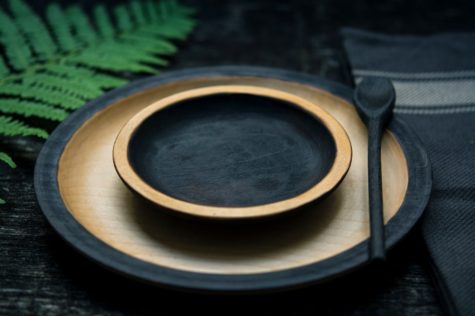
Fasting refers to complete abstinence from food for a short or long period for a specific purpose. The word is derived from the old English, ‘feastan’ which means to fast, observe, be strict. Fasting is nature’s oldest, most effective and yet least expensive method of treating disease. It is recognized as the cornerstone of natural healing. Dr. Arnold Eheret, the originator of the mucus-less diet healing system, describes it as ” nature’s only universal and omnipotent remedy of healing” and “nature’s only fundamental law of all healing and curing. ”
The practice of fasting is one of the most ancient customs. It is followed in almost every religion. The Mohammedan, the Buddhists, the Hindus and many others have their periods of strict fasting. The saints of medieval times laid great stress on this method.
Fasting in disease was advocated by the school of natural philosopher, Asclepiades, more than two thousand years ago. Throughout medical history, it has been regarded as one of the most dependable curative methods. Hippocrates, Galen, Paracelsus and many other great authorities on medicine prescribed it. Many noted modern physicians have successfully employed this system of healing in the treatment of numerous diseases.
The common cause of all diseases is the accumulation of waste and poisonous matter in the body which results from overeating. The majority of persons eat too much and follow sedentary occupations which do not permit sufficient and proper exercise for utilization of this large quantity of food. This surplus overburdens the digestive and assimilative organs and clogs up the system with impurities or poisons. Digestion and elimination become slow and the functional activity of the whole system gets deranged.
The onset of disease is merely the process of ridding the system of these impurities. Every disease can be healed by only one remedy – by doing just the opposite of what causes it, that is, by reducing the food intake or fasting.
By depriving the body of food for a time ,the organs of elimination such as the bowels, kidneys, skin and lungs are given opportunity to expel, unhampered, the overload of accumulated waste from the system. Thus, fasting is merely the process of purification and an effective and quick method of cure. It assists nature in her continuous effort to expel foreign matter and disease producing waste from the body, thereby correcting the faults of improper diet and wrong living. It also leads to regeneration of the blood as well as the repair and regeneration of the various tissues of the body.
Duration
The duration of the fast depends upon the age of the patient, the nature of the disease and the amount and type of drugs previously used. The duration is important, because long periods of fasting can be dangerous if undertaken without competent professional guidance. It is, therefore, advisable to undertake a series of short fasts of two to three days and gradually increase the duration of each succeeding fast by a day or so.
The period, however, should not exceed a week of total fasting at a time. This will enable the chronically sick body to gradually and slowly eliminate toxic waste matter without seriously affecting the natural functioning of the body. A correct mode of living and a balanced diet after the fast will restore vigor and vitality to the individual.
Fasting is highly beneficial in practically all kinds of stomach and intestinal disorders and in serious conditions of the kidneys and liver. It is a miracle cure for eczema and other skin diseases and offers the only hope of permanent cure in many cases. The various nervous disorders also respond favorably to this mode of treatment.
Fasting should, however, not be restored to in every illness. In cases of diabetes, advanced stages of tuberculosis, and extreme cases of neurasthenia, long fasts will be harmful. IN most cases, however , no harm will accrue to fasting patients, provided they take rest, and are under proper professional care.
Fasting – Methods
The best, safest and most effective method of fasting is juice fasting. Although the old classic form of fasting was a pure water fast, most of the leading authorities on fasting today agree that juice fasting is far superior to a water fast.
According to Dr. Rangar Berg, the world -famous authority on nutrition, “During fasting the body burns up and excretes huge amounts of accumulated wastes. We can help this cleansing process by drinking alkaline juice instead of water while fasting … Elimination of uric acid and other inorganic acids will be accelerated. And sugars in juices will strengthen the heart … juice fasting is, therefore, the best form of fasting. ”
Vitamins, minerals, enzymes and trace elements in fresh, raw vegetable and fruit juices are extremely beneficial in normalizing all the body processes. They supply essential elements for the body’s own healing activity and cell regeneration and thus speeding the recovery. All juices should be prepared from fresh fruit immediately before drinking. Canned or frozen juices should not be used.
A precautionary measure which must be observed in all cases of fasting is the complete emptying of the bowels at the beginning of the fast by enema so that the patient is not bothered by gas or decomposing matter formed from the excrement remaining in the body. Enemas should be administered at least every alternate day during the fasting period. The patient should get as much fresh air as possible and should drink plain lukewarm water when thirsty. Fresh juices may be diluted with pure water. The total liquid intake should be approximately six to eight glasses.
A lot of energy is spent during the fast in the process of eliminating accumulated poisons and toxic waste materials. It is, therefore, of utmost importance that the patients gets as much physical rest and mental relaxation as possible during the fast. In cases of fasts in which fruit juices are taken, especially when fresh grapes, oranges or grapefruit are used exclusively, the toxic wastes enter the blood -stream rapidly, resulting in an overload of toxic matter, which affects normal bodily functions. This often results in dizzy spells, followed by diarrhea and vomiting. If this physical reaction persists, it is advisable to discontinue the fast and take cooked vegetables containing adequate roughage such as spinach and beets until the body functioning returns to normal.
The overweight person finds it much easier to go without food. Loss of weight causes no fear and the patient’s attitude makes fasting almost a pleasure. The first day’s hunger pangs are perhaps the most difficult to bear. The craving for food will, however, gradually decrease as the fast progresses. Seriously sick persons have no desire for food and fasting comes naturally to them. The simplest rule is to stop eating until the appetite returns or until one feels completely well.
Only very simple exercises like short walks may be undertaken during the fast. A warm water or neutral bath may be taken during the period. Cold baths are not advisable. Sun and air baths should be taken daily. Fasting sometimes produces a state of sleeplessness which can be overcome by a warm tub bath, hot water bottles at the feet and by drinking one or two glasses of hot water.
Benefits
There are several benefit of fasting. During a long fast, the body feeds upon its reserves. Being deprived of needed nutrients, particularly of protein and fats, it will burn and digest its own tissues by the process of autolysis or self-digestion. But it will not do so indiscriminately. The body will first decompose and burn those cells and tissues which are diseased, damaged, aged or dead. The essential tissues and vital organs, the glands, the nervous system and the brain are not damaged or digested in fasting.
Here lies the secret of the effectiveness of fasting as a curative and rejuvenative method. During fasting, the building of new and healthy cells are sped up by the amino acids released from the diseased cells. The capacity of the eliminative organs, that is, lungs, liver, kidneys and the skin is greatly increased as they are relieved of the usual burden of digesting food and eliminating the resultant wastes. They are, therefore, able to quickly expel old accumulated wastes and toxins.
Fasting affords a physiological rest to the digestive, assimilative and protective organs. As a result, the digestion of food and the utilization of nutrients is greatly improved after fasting. The fast also exerts a normalizing, stabilizing and rejuvenating effect on all the vital physiological, nervous and mental functions.
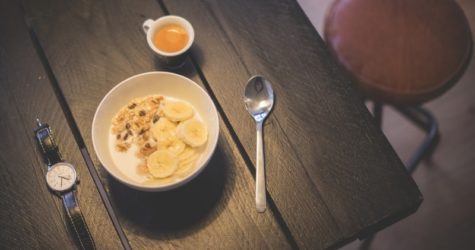
Breaking the Fast
The success of the fast depends largely on how it is broken. This is the most significant phase. The main rules for breaking the fast are: do not overeat, eat slowly and chew your food thoroughly; and take several days for the gradual change to the normal diet. If the transition to eating solid foods is carefully planned, there will be no discomfort or damage. The patient should also continue to take rest during the transition period. The right food after a fast is as important and decisive for proper results as the fast itself.
Releasing Emotional Turbulence
It’s not easy to deal with painful emotions head-on. But it’s a key to good health and well-being physically, mentally, and spiritually. If we don’t deal with pain when it occurs, it will resurface as compounded emotional toxicity later on — showing up as insomnia, hostility and anger, or fear and anxiety.
As a further complication, if you don’t know how to deal with feelings of anger and fear, you’re likely to turn them inward at yourself, believing, “It’s all my fault.” That guilt depletes our physical, emotional, and spiritual energy until any initiative or movement feels impossible. We feel exhausted and paralyzed, leading to depression.
You can learn how to recognize painful emotions right away and how to effectively “metabolize” and eliminate pain.
Overcoming difficult emotions such as fear, anger, guilt, and anxiety can bring the same disguised benefits that dealing with a physical illness can bring. Patients suffering from life-threatening illness often report that their diseases have taught them to love and value the other people in their lives more deeply than before they became ill. During recovery they learn to appreciate and understand areas of life that they took for granted before. While anger, fear, and worry are not diseases, we can grow from them even as we process them to become the person we want to be.
By turning to our inherent intelligence, harmony, and creativity, we can create a positive outcome; but if we are emotionally turbulent, we are too agitated to access that possibility.
Why meditation is part of this exercise:
Through meditation we can experience our silent self beyond our thoughts and emotions. This is our internal reference point for equilibrium. From here we can create a desired outcome. To restore balance in our life, meditation must be an essential ingredient.
It is also important to support this with balanced activity in the basic areas of diet, exercise, and sleep. While some of these meditation exercises do not require any, we recommend our simple and effective meditation accessories for beginners.
Assuming these fundamental balancing components are in place, I would offer an additional exercise to specifically address what to do in the face of intense anxiety and fear.
Metabolize pain with this seven-step exercise:
Toxic, turbulent emotions have one cause — not knowing how to deal with pain. Pain is normal in life, but suffering isn’t. When we do not know how to deal with pain, we suffer.
- 1. Identify and locate the emotion physically
Set aside a few minutes when you won’t be disturbed. Pick any quiet place where you feel calm. It is recommended to take a seat that is sturdy, yet comfortable. The best practice is sitting up straight. The floor is not a bad idea, but this can become uncomfortable very quickly. Sit in a relaxed position and close your eyes. For a few minutes, just meditate in silence. Focus on your breathing — or if you prefer, you may use a mantra.
Now with eyes still closed, recall some circumstance in the recent past that was upsetting to you. It may be a time when you felt you were mistreated, an argument with your partner, or perhaps a past injustice at work. Identify some instance where you felt emotionally upset.
For the next 30 seconds, think in detail about that incident. Try to picture what actually happened as vividly as you can, as if you were reporting it for a newspaper. Here, you are the observer watching this event. You are not the event, argument, or emotional upset; you are merely witnessing what is happening from the perspective of your silent self. You are carrying the effect of the meditation you just did, allowing you to maintain a vantage point that is not overshadowed by the intensity of the emotions.
Now identify exactly what you are feeling. Put some word on the incident that describes what you are experiencing. Be as precise as you can. Do you feel unappreciated? Insulted? Treated unfairly? Give the feeling a name. Come up with a word that epitomizes the painful experience. Focus your attention on that word.
- 2. Witness the experience
Gradually allow your attention to move away from the word. Let your attention wander into your body. Become aware of the physical sensations that arise in your body as a result of the emotion you’ve identified.
These two elements — an idea in the mind and a physical sensation in the body — are what an emotion truly is, and they can’t really be separated. This is why we call it a feeling — because we feel emotions in our bodies.
Let your attention pass through your body as you’re recalling this experience. Locate the sensations the memory brings up. For many it’s a pressure in the chest or a sensation of tightness in the gut. Some feel it as pressure in their throat. Find where it is in your body that you’re feeling and holding the emotional experience.
- 3. Express the emotion
Now express that feeling. Place your hand on the part of your body where you sense that the feeling is located. Say it out loud: “It hurts here.” If you’re aware of more than one location for the pain, move your hand from place to place. At every location, pause for a moment and express what you’re feeling. Say, “It hurts here.”
When you experience physical discomfort, it means that something is unbalanced in your experience — physically, mentally, or spiritually. Your body knows it — every cell in your body knows it. Befriend these sensations and their wisdom, because the pain is actually leading you to wholeness.
Writing your feelings out on paper is also a valuable way to express the emotion. This is especially effective when you can write out your painful experience in the first person, in the second person, and finally from the perspective of a third-person account.
- 4. Take responsibility
Be aware that any painful feelings you experience are your feelings. These feelings are happening inside your body now as you remember the pain, even though nothing is actually taking place in the material world. You’re only remembering what happened, yet your body is reacting with muscle contractions, hormonal secretions, and other responses within you. Even when the painful incident was occurring in the material world, the effect was entirely within you. You have a choice in how you interpret and respond to emotional turbulence. Recognizing this is taking responsibility for your feelings.
This doesn’t mean you feel guilty. Instead, it means you recognize your ability to respond to painful situations in new and creative ways. By taking responsibility for your feelings, you can also gain the power to make the pain melt away. You’re no longer blaming anyone else for having caused the pain, so you no longer have to depend on anyone else to make it go away. Hold that understanding in your consciousness for the next few moments.
- 5. Release the emotion
Place your attention on the part of your body where you’re holding the pain, and with every exhalation of your breath, have an intention of releasing that tension. For the next 30 seconds, just feel the painful sensation leaving your body with every breath. Some people find that making an audible tone that resonates in that part of your body where the pain is localized helps to loosen and lift the contraction away.
You can also experiment to discover what works best for you. For some people, singing or dancing does the trick. You may try deep breathing, using essential oils, or taking a long warm bath. Finally, if you have written out your emotions on paper, it can be helpful to ritually burn the paper and offer the ashes to the winds.
- 6. Share the outcome
Sharing the outcome of releasing your pain is important because it activates the new pattern of behavior after the old painful pattern is released. Imagine that you could speak to the person who was involved in that original painful incident. What would you say to that person now?
Bear in mind that he/she was not the real cause of your pain. The real cause was your response. In your transformed state, you are now free. So you can share what happened without blame, manipulation, or seeking approval. Perhaps they intended to cause you pain, and you may have unwittingly collaborated in that intention. Maybe you would like to say you no longer intend to fall into such traps.
Whatever you say is totally up to you. As long as you have an awareness of the steps we’ve taken so far in this exercise, whatever you say will be right for you.
- 7. Celebrate the process
Now you can celebrate the painful experience that had taken place as the valuable material that helped you move to a higher level of consciousness. What was previously a disconnected, destructive, and disabled part of your psyche is now integrated and contributing its power toward your greater spiritual goal. Instead of responding to the situation with a pain reflex, perpetuating the problem, you’ve turned it into an opportunity for spiritual transformation. That is something to celebrate! Go out for a nice dinner or buy yourself some flowers or a present to honor the new you.
Use this exercise whenever you feel upset, to free yourself from emotional turbulence and the underlying pain. When you do that, you’ll find that opportunities will arise more often in every area of your life.
Found at: Gaiam.com
Turn Back Your Biological Clock
Rejuvenation is the deliberate restoration of youth and vigor through self-intervention in the aging process. Negative mental states such as anxiety, depression, hostility, and insecurity tend to be debilitating, hastening the aging process.
Positive mental states such as self-confidence, self-esteem, self-acceptance, and a sense of personal adequacy are empowering and inject rejuvenating energies into the body, eradicating those disempowering states which contribute to aging.
Love, for example, is one of the most empowering rejuvenation elements know. When present in the psyche, it neutralizes hate, its negative counterpart that is destructive. Dormant rejuvenating forces already exist within each of us and can be activated to intervene in the physical aging process.
Psychic Rejuvenation
- Step 1:
Relaxation. Physical relaxation sets the stage for using your psychic faculties to intervene in the body’s many functions. Close your eyes, slow down your breathing and allow your muscles to relax from the forehead down followed by the affirmation:
“I am now in full charge of my body. I am capable of influencing every function, mental and physical. All rejuvenating energies of my being are now at my command.”
- Step 2:
Stress Expiation. Even when stress is reduced through relaxation, certain residual effects tend to linger. By visualizing the major systems and organs of the body and mentally infusing them with rejuvenating energy you can extinguish the residual effects of stress on the body. Energizing the body’s systems and organs is accomplished by centering full awareness on various body regions and mentally bathing them with glowing energy while using the following affirmation:
“Youthful, invigorating energy is now flowing throughout my body. All organs systems and functions are now revitalized. The wear-and-tear of stress is now replaced by the flow of youth and vigor.”
- Step 3
Balance. With the body physically relaxed and the residual effects of stress relieved, an empowering state of full balance is possible through a technique called the Fingerpad Engagement Procedure. Designed to balance left- and right-brain functions, this procedure attunes the mind and body-a condition essential to rejuvenation.
Bring the tips of your fingers together; then with the fingerpads in a comfortable position, with your eyes closed, imagine your hands as antennae for your brain. Imagine your left brain actively generating positive energy, which flows into your right hand as an extension of that hemisphere.
Next, imagine your right brain producing positive energy which flows into your left hand as an extension of that hemisphere, Allow the energies flowing into your hands to mingle and create a powerful exchange that balances your mental and physical systems. After a few moments, disengage your fingerpads and allow your hands to relax, palms side up. Conclude with the following affirmation:
“My total being is balanced and infused with rejuvenating energy. The energies of youth are now unleashed to flow throughout my being. I am completely attuned within myself and with the world.”
- Step 4:
PK Illumination. This is the final and most critical step in the rejuvenation process. Visualize or look at a photograph of yourself in your youthful prime. Study this image, carefully noting the youthfulness in your eyes. Now close your eyes and visualize yourself at the peak of youth standing before a full-length mirror. Study your eyes in the mirror and observe a youthful gleam. Next, surround yourself with a glow of energy, then think of your favorite color. Finally, while breathing slowly and rhythmically, soak in the rejuvenating glow enveloping your body. Conclude with this affirmation:
“My powers of rejuvenation are now being unleashed to permeate my total being with the glow of youth and vigor. Every system within is now being revitalized with the infusion of rejuvenating power. Tired, worn tissue is being fortified with the energies of youth. Every function of my body is now fully infused as sparkling youthful energy is absorbed into every cell and fiber.
Surrounded by a colorful aura of rejuvenating energy, I am now secure in the present, bathed in vitality and the glow of youth. My inner rejuvenating powers are fully and completely unleashed to flow freely throughout my total being. Each day, my mind and body absorb the abundance of youthful energy that is constantly being unleashed within my being. Whenever I envision myself enveloped with the colorful glow of radiant energy, I will immediately become invigorated and fully empowered.”
- A Final Note:
This rejuvenation procedure can be repeated daily, or as often as you wish. You may want to place a small, self-adhesive star or other reminder on your mirror, computer, or TV as a cue to periodically re-activate the inner flow of rejuvenating energy. With practice, the process of combining visualization with affirmations and tapping into the dormant powers of rejuvenation within you will become a natural, spontaneous and continuous function.
© 1995 by Joe Slate Ph.D.
Clearing Out The Crap – Literally!
Years ago, in my ongoing internet search for ways to feel better in my body I found this:
The Salt Water Flush
Drink an oral salt water enema upon arising. To do this, add 2 level teaspoons of uniodized sea salt to a quart of lukewarm water (the one-quart juice bottles in which most organic juices come work very well). Shake well, then drink the entire quart. It’s also good to massage the colon as well. Make sure you use uniodized sea salt; regular or iodized salt will not have the same beneficial effect.
This oral enema will flush out your entire digestive tract and colon from top to bottom, usually within an hour, prompting you to eliminate several times, clearing out the plaque and debris from the walls, and the parasites that have been living there.
This looks like a fairly easy way to clear out my colon. Not only that, it does not require that I, have a colonic or give up caffeine or sugar!! And it’s not even expensive or time consuming! How cool is that?
Here’s a quote from the website:
Many diseases start in the intestines, so it is a good idea to do a cleansing. We should be aware that one’s healing process must go much further including all levels of one’s existence – not only the physical… It is no coincidence that you arrived at this Web site. Here you will find a lot more in your search for health. Take your time… you might also enjoy it. ~BeiYin
And then because I was looking for images to illustrate the post, I did a new search and found this article at The Awareness Revolution:
3 Variations of Saltwater Flush
As much as we’ve been told that salt is bad for us it may come as a surprise to hear that salt is actually good for us. The problem is what most of us think of when we think of salt isn’t salt. It’s processed salt. Processed salt (table salt) has had its minerals stripped from it during the processing. Throw it away! Only use sea salt or Himalayan salt.
The truth is we need salt but we’ve been getting the wrong kind of it. And we each need to find the right amount of salt intake for us. You’d be surprised to find out how much salt we actually consume. Like sugar, salt is loaded in processed foods, giving it the good taste we enjoy. When you make your own meals at home and have to add the salt to it you’ll see how much has been in the food we’ve been eating this whole time. At least this way you’ll know you’re getting the right kind of salt. The more that you eat whole foods from nature, the more you’ll notice you have to add salt to your other foods to keep in balance.
One of the best ways to get salt into your diet is to start your day with one of these 3 variations of the saltwater flush:
- A little salt in your morning water
This is one small tip that may have a huge impact on your life. I first heard this from David Wolfe when I asked why I felt so thirsty even though I was drinking lots of water. He told me to add a pinch of salt to my water. It worked! He also says that he notices immediate relief from his allergies by drinking a glass of water with a lot of salt in it.
By reading The Bulletproof Diet, I learned that the human body makes its best use of salt in the morning. Author of The Bulletproof Diet, Dave Asprey, also recommends drinking salty water in the morning. He fixed his adrenal fatigue by drinking saltwater in the morning. In fact, David Wolfe also said saltwater is a great remedy for adrenal fatigue!
With this variation the dosage is up to you. You can add a pinch of salt or a teaspoon to your glass of water. Some people prepare it by creating what is known as sole. What is important is that you consistently do it. Monitor how you feel and increase or decrease the salt accordingly. This variation is more of a regular routine, as oppose to something you do every now and then.
- Saltwater Flush
The saltwater flush is gaining popularity on the internet. A quick google search will give you lots of sites telling you how to do it but you basically just mix about 2 teaspoons of salt in a liter of water. Then chug! The water is pretty salty, but you can get it down with some determination. This method isn’t done every day like the first variation. You can do it as little or as often as you’d like, but once a week would be a nice middle-ground.
Doing a saltwater flush regularly is great for hydration, detoxification, and re-mineralization. Unlike colonics that only cleanse the colon, saltwater flushes are great because they clean the entire GI tract.
It may help to lay down on your side and gently massage your intestines after drinking the salt water. This will help it move throughout your system. If you experience some discomfort in your stomach during your flush, this should help.
Super Saltwater Flush
OK so I made up the phrase “Super Saltwater Flush” but it seems appropriate. It’s just like the saltwater flush, but much more extreme. Instead of taking two teaspoons in a liter of water, you’re taking 2-3 tablespoons in a gallon of water. That’s a lot of saltwater! It really is a super saltwater flush. I heard about this from David Wolfe when he was giving one of his lectures at his Longevity Now Conference. The lecture is still available on David Wolfe’s paid-membership site TheBestDayEver.com.
David Wolfe became friends with someone named Genesis Sunfire, who did the super saltwater flush one week per month, for 10 years, leading him to become a breatharian. Breatharians claim to gain all their energy from the sun and air. They don’t drink water or eat food. David Wolfe admits a lot of the breatharians are fake so he was skeptical of Genesis Sunfire. But after living with him for a period of time he’s convinced Genesis is the real thing. Genesis says the super saltwater flush nourished him enough over time he was able to eventually stop eating. Then, after more time, he lost the need to drink liquids.
Whether you believe this story or not, it’s certainly thought-provoking astonishing. Here more about Genesis’ story here.

